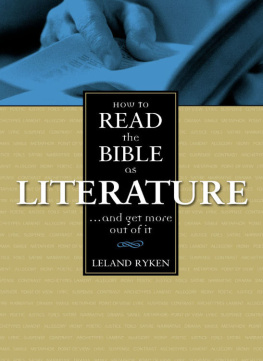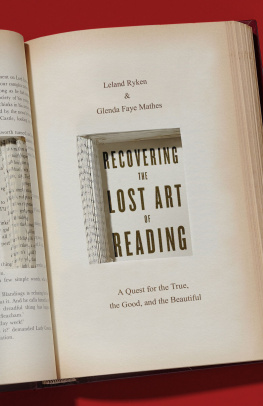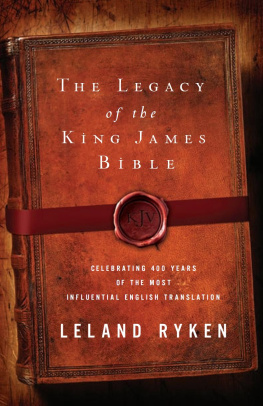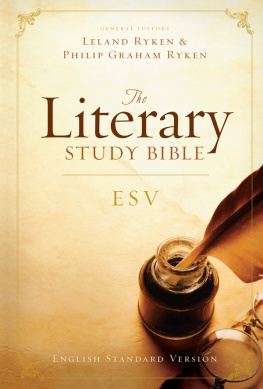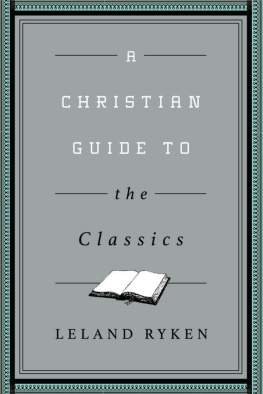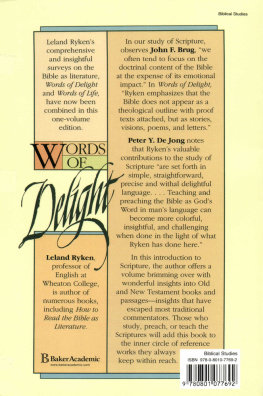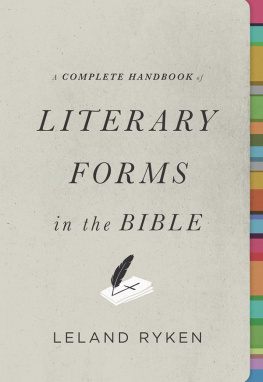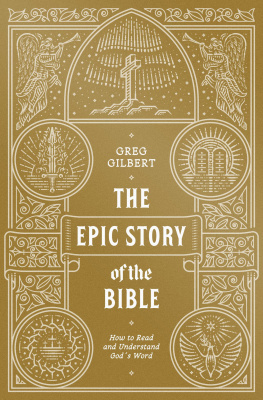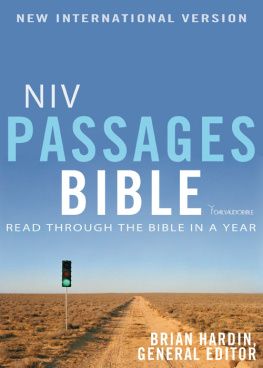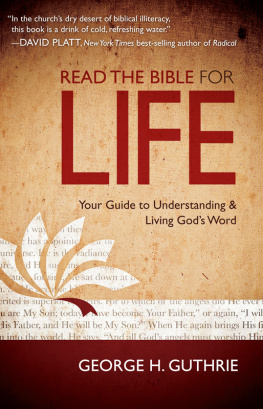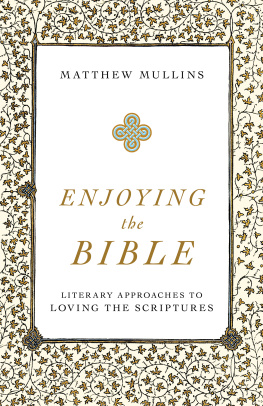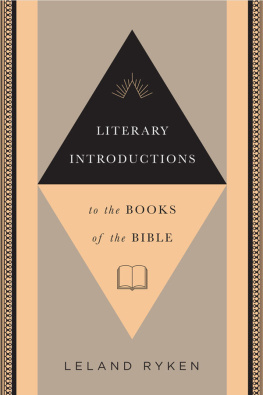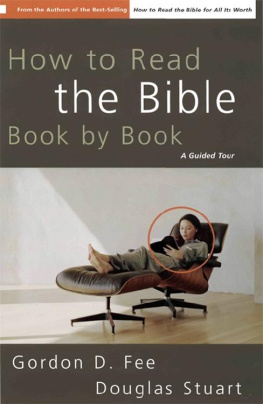ZONDERVAN
How to Read the Bible as Literature
Copyright 1984 by Zondervan
Requests for information should be addressed to:
Zondervan, 3900 Sparks Dr. SE, Grand Rapids, Michigan 49546
ePub Edition October 2016: ISBN 978-0-3105-3633-8
Library of Congress Cataloging-in-Publication Data
Ryken, Leland.
How to read the Bible as literature.
p. cm.
Includes index.
ISBN 0-310-39021-4
1. Bible as literature. 2. BibleCriticism, interpretation, etc.. I. Title.
BS535.A9 R89 1984
220.66
84-19667
All Scripture quotations, unless otherwise indicated, are taken from The Holy Bible, New International Version, NIV. Copyright 1973, 1978, 1984, 2011 by Biblica, Inc. Used by permission. All rights reserved worldwide.
All rights reserved. No part of this publication may be reproduced, stored in a retrieval system, or transmitted in any form or by any means electronic, mechanical, photocopy, recording, or any other except for brief quotations in printed reviews, without the prior permission of the publisher.
Edited by: Ed van der Maas
Designed by: Louise Bauer
15 16 17 18 19 20 /DCI/ 50 49 48 47 46 45 44 43 42 41 40
For my parents
Contents
The one thing the Bible is not is what it is so often thought to bea theological outline with proof texts attached.
Asked to define neighbor, Jesus told a story (Luke 10:2527). Likewise, Jesus aphoristic command Remember Lots wife (Luke 17:32) shows that he believed that truth can be embodied in concrete examples or images as well as in moral propositions.
When asked by his disciples why he spoke in parables, Jesus outlined a theory of communication (Matt. 13:1017) based on the literary principle of indirection: he concealed the truth from immediate perception in order to reveal it to listeners who were willing to ponder his parables. Instances from the life of Jesus such as these suggest a literary approach to truth that frequently avoids direct propositional statement and embodies truth in distinctly literary forms.
Furthermore, there is a preoccupation among biblical writers with artistry, verbal craftsmanship, and aesthetic beauty. The writer of Ecclesiastes presents a theory of writing that stresses beauty of expression as well as truthfulness of content; he labored to arrange proverbs with great care and sought to find pleasing words (Eccl. 12:910 RSV ). If the Bible is an artistically beautiful as well as a truthful book, it demands a literary approach in addition to the historical and theological approaches.
Traditionally, we have been so preoccupied with the hermeneutical question of how to interpret what the Bible says that we have been left impoverished in techniques to describe and interact with the text itself. In the thirteenth century, Roger Bacon argued that the church had done a good job of communicating the theological content of the Bible but had failed to make the literal level of the biblical text come alive in peoples imaginations. We are in a similar situation today, even though the literary emphasis on the primary or literal level of a biblical text actually builds upon the grammatico-historical method of interpretation, which likewise aims to take a reader as close as possible to the originally intended, plain meaning of the text.
This book is an introduction to the literary forms of the Bible, with emphasis on the activities that those forms require of a reader. It is a grammar of literary forms and techniques. As such, it is a companion or supplement to similar handbooks by biblical scholars.
I am happy for this occasion to thank my Wheaton College colleagues Alan Johnson of the Bible Department and Jim Wilhoit of the Christian Education Department for their unfailing helpfulness in pointing me to material from their disciplines and in sparing me from errors of ignorance. This book also benefited from criticism by Ron Allen of Western Conservative Baptist Seminary and Stanley Gundry, Editor-in-Chief at Zondervan. I am equally indebted to my wife, Mary, for serving as stylistic critic and proofreader.
I have taken most of my biblical quotations from the New International Version. Where I have used the King James Version ( KJ ) or the Revised Standard Version ( RSV ), I have so indicated.
Chapter One
Is the Bible Literature?
New Directions in Biblical Studies
T HERE IS A QUIET REVOLUTION GOING ON in the study of the Bible. At its center is a growing awareness that the Bible is a work of literature and that the methods of literary scholarship are a necessary part of any complete study of the Bible. There are two sides to the movement: literary scholars are showing increasing interest in applying their methods to the Bible, and Bible scholars are calling for a literary approach.
A number of ingredients make up this new approach to the Bible: a concern with the literary genres of the Bible; a new willingness to treat biblical texts as finished wholes instead of as a patchwork of fragments; a focus on the Bible as it now stands instead of conducting excavations in the redaction (editing) process behind the text; an inclination to use literary instead of traditional theological terms to discuss the stories and poems of the Bible; an appreciation for the artistry of the Bible; a sensitivity to the experiential, extra-intellectual (more-than-ideational) dimension of the Bible.
Approaching the Bible as Literature
But above all, the new attitude toward the Bible involves a growing awareness that literature expresses truth in its own way, different from ordinary propositional discourse. In other words, when the Bible employs a literary method, it asks to be approached as literature and not as something else. In the words of C. S. Lewis, There is a... sense in which the Bible, since it is after all literature, cannot properly be read except as literature; and the different parts of it as the different sorts of literature they are.
Defining the Term Literature
The purpose of this opening chapter is to identify what makes a text literature. I should say at once that by the term literature I do not mean everything that is written. I use it in a more restricted sense to mean the types of writing that are often called imaginative literature or creative writing, in contrast to expository writing. In this chapter, I am in effect defining those parts of the Bible that are like the works covered in high school and college literature courses.
The Literary Continuum
By thus defining literature I am not establishing an either-or method of distinguishing between literary and nonliterary texts. The Bible is obviously a mixed book. Literary and nonliterary (expository, explanatory) writing exist side by side within the covers of this unique book. I have no intention of building a great divide that would make a biblical passage either literature or nonliterature. Instead, I am describing a continuum, or scale, on which some parts of the Bible are more literary and other parts are less literary.
More Than One Approach Is Necessary
Nor do I wish to suggest that the literary parts of the Bible cannot be approached in other ways as well. I do not question that the literary parts can and should also be approached as history and theology. My claim is simply that the literary approach is one necessary way to read and interpret the Bible, an approach that has been unjustifiably neglected.

